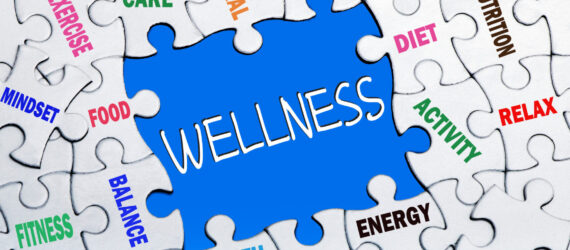
Wellness
In theory, we all know the things we need to do to take care of ourselves. However, sometimes we can’t break unhealthy patterns or don’t know the right path to minimize stress and maximize health, mentally, physically and emotionally. This is especially true during stressful times. Below are some resources for maintaining a healthy lifestyle and minimizing stress. Please contact the Mass General Brigham Employee Assistance Program at 866-724-4327 if you need assistance with any of these issues.
EAP News Articles
- Understanding Menopause Treatment Options
- Understanding Long COVID
- The Connection Between Food and Mood
- Is Marijuana as Safe as You Think it is?
- Steps You Can to Protect Your Brain Health Today and in the Future
- Find Healthy Habits that Work for You
- If you want to Improve your Health, Improve your Sleep
Information on Healthy Eating & Drinking
- BWH Dept of Nutrition – Guidelines for Healthy Eating
- BWH Dept of Nutrition – Nutrition Basics
- HSPH – NutritionSource
- USDA – My Plate
- American Diabetes Association – Eating Well
- Cleveland Clinic – Understanding the Mediterranean Diet
- MGH – Choosing Healthy Snacks
- Harvard Health – The Sweet Dangers of Sugar
- Harvard Health – The Truth about Fats
- HSPH – How Chronic Stress Affects Eating Patterns
- Help Guide – Kids and Healthy Eating
- NAAA – Alcohol Calorie Calculator
Programs & Apps for Weight Management
- Brigham Health – Nutrition Tools
- My Fitness Pal (basic functions are free)
- Noom (requires membership fee)
- Weight Watchers (requires membership fee)
- Ketogenic Diets
- Intermittent Fasting
Affordable Healthy Eating
Being “mindful” is a broad term, which refers to being present in the moment. The resources below offer information on different practices for being mindful and highlight the benefits for addressing stress, anxiety and physical health problems.
Meditation is the activity of quieting the mind. It may include sitting, lying, or walking and often uses a specific focus of attention. It can help promote a feeling of calmness and/or physical relaxation.
- Mindful.org – Understanding Meditation
- National Center for Complementary and Integrative Health – Benefits of Meditation
- EAP Meditation Webinars – Register for upcoming Webinars and view Recordings of Previous Sessions
- Benson-Henry Institute – Guided Relaxation Exercises
Mini-mindfulness
The three part breath technique is an exercise that utilizes your entire lung capacity creating a state of deep relaxation in your body. Take a deep inhale through your nose, notice how the stomach expands like a big balloon. On the exhale, expel all the air out from the belly through your nose. Draw the navel back towards your spine to make sure that the belly is empty of air. On the next inhale, fill the belly up with air as described above. Then when the belly is full, draw in a little more breath and let that air expand into the rib cage, causing the ribs to widen apart.
- On the exhale, let the air go: first from the rib cage, letting the ribs slide closer together; and then from the belly, drawing the navel back towards the spine.
- On the next inhale, place your hands on your chest with the fingertips underneath the clavicles (collar bones) and fill the belly and rib cage up with air as described above. Then draw in just a little more air and let it fill the upper chest.
- On the exhale, let the breath go first from the upper chest, letting the ribs slide closer together. Finally, let the air go from the belly, drawing the navel back towards the spine.
- Continue at your own pace, letting the three parts of the breath happen smoothly without pausing. Continue for about 10 breaths.
- On the exhale, allow your body to return to its natural breath cycle. Pause and notice the effects of this practice, any sensations that may arise in your body, any thoughts and any feelings. Practice daily.
Regular yoga practices can help you achieve the sense of wellness you are seeking. Breathing techniques, stretches, and meditation help you release tension, build proper body alignment, increase awareness, focus the mind, and nourish and restore your balance. Here is information on the health benefits of yoga:
You can develop a more positive outlook by taking steps every day to change how you think. This process may take time, especially with today’s challenges. You may see a difference right away just by trying a few things. Here are tips on building more optimism into your life:
- Be aware of your negative thoughts. Stop and listen to the messages you’re sending yourself. If you have negative thoughts about a situation you can’t change, try to replace them with positive ones. For example, you may say something like, “I can handle this,” when you are in a situation that you cannot change. What you can change is how you view the situation more optimistically.
- Engage in positive self-talk. Create alternate responses to the negative thoughts you would like to change and consider writing those responses down. For example, if you think, “I’ll never be able finish this project,” try, “I’ll break it down into small steps.” If you think, “I don’t know how to do that,” try, “I can learn something new.”
- Bring more humor into your life. Tap into the power of laughter. Rent funny movies, hang a cartoon up on your refrigerator, or enjoy humorous songs and stories with your friends.
- Spend time with optimistic people. Research has found that moods and ideas are contagious. Chronic complainers can bring you down even if you aren’t aware of it. Spend as much time as you can with optimistic people who can help lift your spirits.
- Practice gratitude. A pessimistic outlook may cause you to lose sight of the things you’re thankful for; practicing gratitude can restore the balance. Spend a few minutes each day thinking about the good things in your life. Some experts suggest that you keep a “gratitude journal” and write down the things that make you feel grateful.
- Recognize what you can control. You may start to feel pessimistic if you dwell on things you can’t control. Focus on doing all you can to improve what you can control.
- Develop or keep up healthy routines. Optimism is easier to maintain when you feel good physically and mentally. Eat a healthy diet and get plenty of sleep and exercise.
- Get help if you have unwanted negative thoughts that won’t go away. Mass General Brigham Employee Assistance Program (EAP), can give you other ideas on what to do if you have persistent negative thoughts that are interfering with your work, relationships, or enjoyment of life.
Mass General Brigham Spirituality Services
Today, our devices, and online activities have become such a big part of our lives. For many, checking email or social media is how their day starts and ends. Developing healthy and balanced digital habits is optimal for emotional wellbeing and coping and better relationships with our in-person connections.
- Limit use of devices before or after going to bed
– Consider reading or a mindfulness activity instead - Set a boundary with work technology
– Turn off notifications and don’t check email too often after hours or while on vacation - Consider doing some activities such as exercise (except to access music) without a device
- Limit phone use while eating or visiting with friends or family
- Limit multi-tasking on your electronic devices

- Don’t use devices while driving
Social Media Habits
- Schedule your time on social media rather than letting it control you
- Be thoughtful about why you’re logging on and stick to your plan
- Remember that someone else’s happy news does not minimize your own and is not necessarily a full representation of their life
- Be yourself
- Put your emotional wellbeing first – you can skip or hide negative or upsetting posts
- Sign off when the stress created by social media becomes overwhelming
General Resources
- Common Sense Media – What Parents Need to Know
- Google Interland -Helping Kids be “Internet Awesome”
- American Academy of Pediatrics – Kids & Tech – Tips for Parents in the Digital Age
- Verywellmind.com – The Signs and Effects of Video Game Addiction
- The Boston Police Department – Parent Internet Safety and App Guidelines
- FBI – Safe Online Surfing for Children
Helping Kids Navigate Social Media
- Start conversations about social media early and revisit these conversations frequently
- Educate children on how to be smart and safe online
- Teach kids how to evaluate information for validity and help them to understand that not everything they see online is real
– People may not admit that they are not always perfect, happy or as polished as they look on social media - Try to approach social media with kids as a shared experience
– Ask them to help you understand social media, how to set up an account, etc.
– Ask kids to tell you about what they are doing and seeing online. Many kids may be reluctant to allow this. You may have to reassure them that you trust them and that your goal is to keep them safe - Model healthy social media habits and be aware of:
-How often you log on
-How you engage with and react to social media
-What you focus on – outward appearance or internal traits




